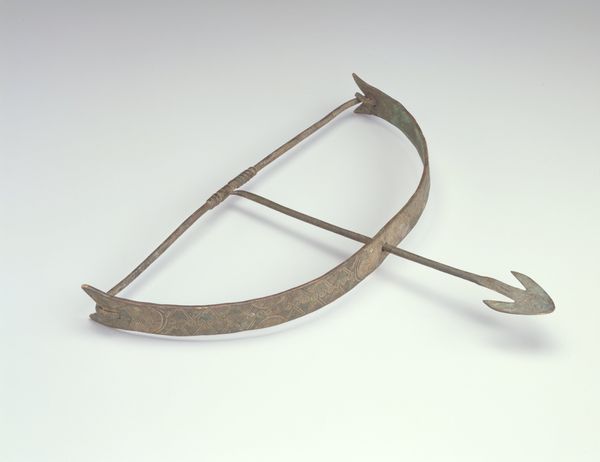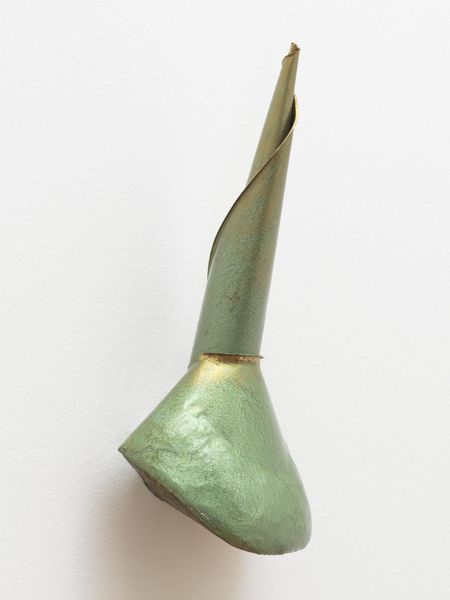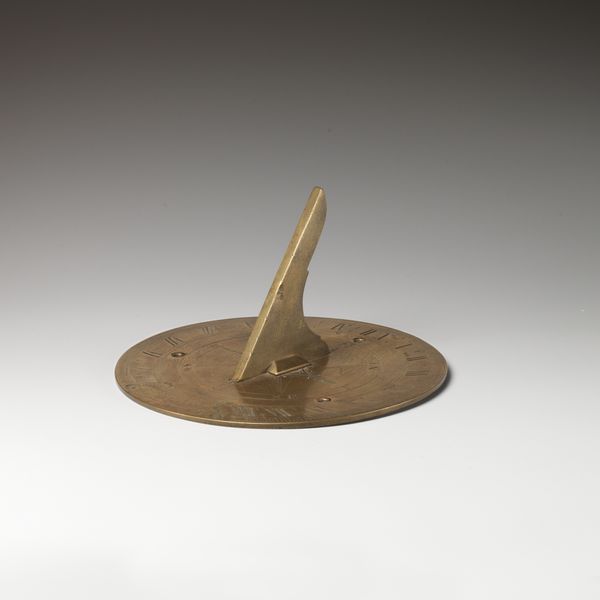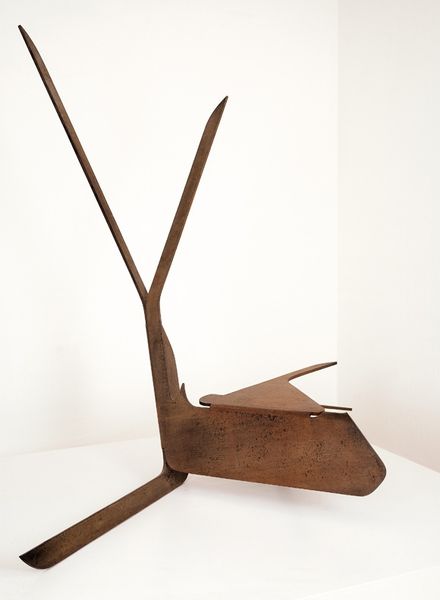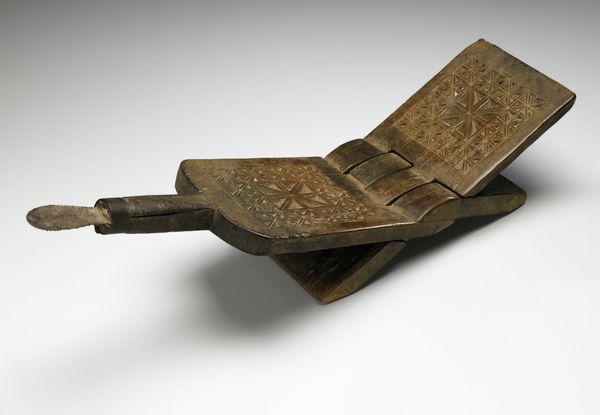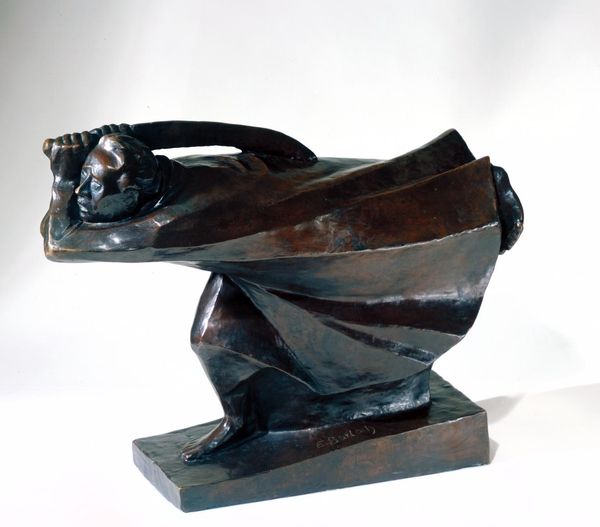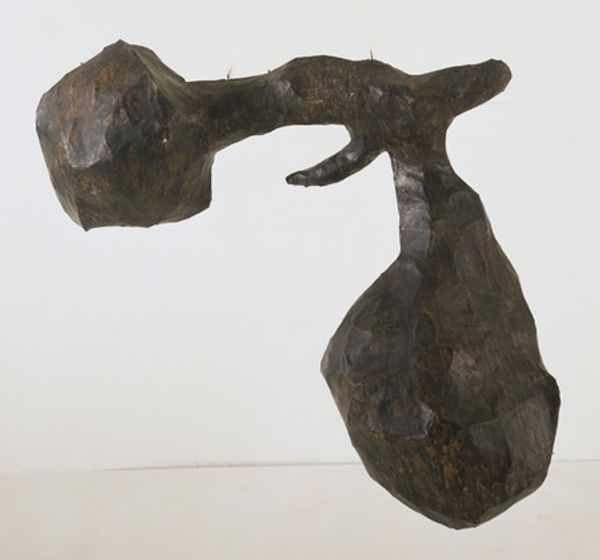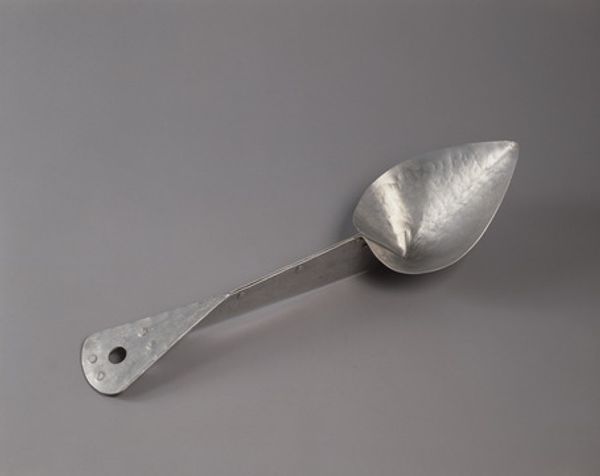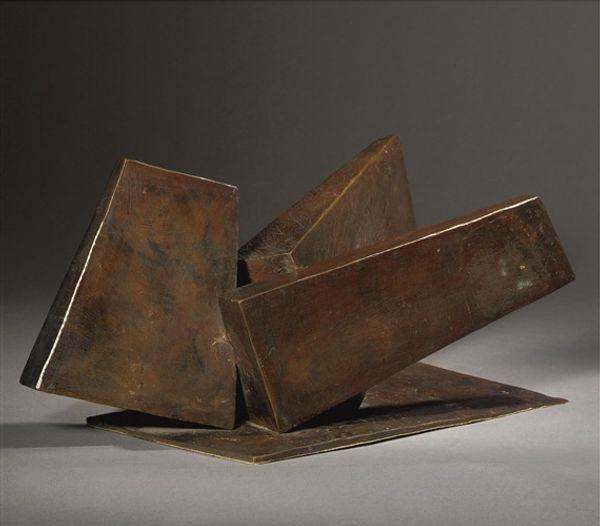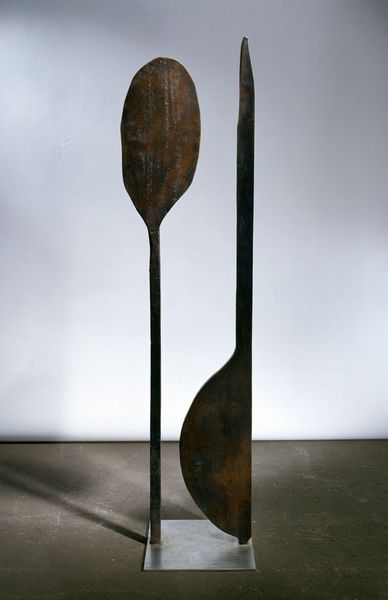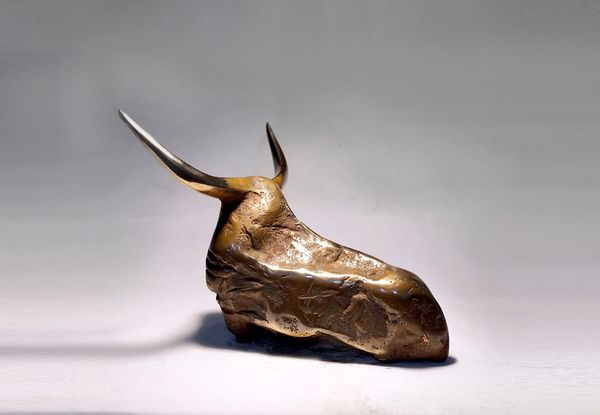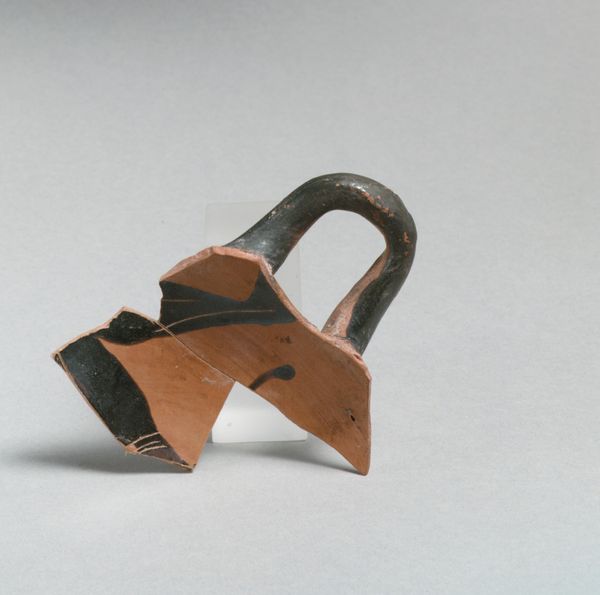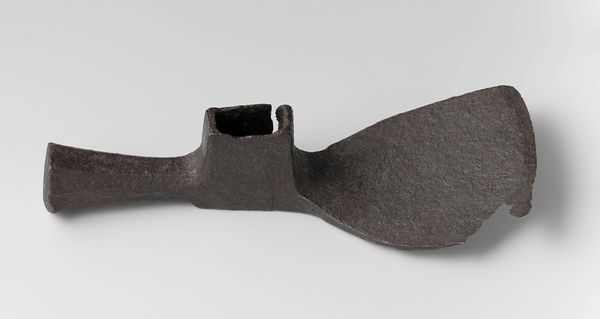
metal, found-object, sculpture
#
metal
#
sculpture
#
found-object
#
sculpture
Dimensions: height 13 cm, depth 19.3 cm, width 46.2
Copyright: Rijks Museum: Open Domain
Curator: Here we have a “Schenktuit, onderdeel van een houten schenkkan,” or spout, part of a wooden jug, dating from about 1590 to 1596. Editor: My eye is drawn immediately to its distressed appearance. It appears bent and timeworn. The copper’s green patina is suggestive of decay. Curator: Indeed. The patina signals both age and the chemical reactions between the copper and its environment. Consider how this seemingly simple object connects to the workshops, trade routes, and broader material culture of the period. It implies a level of metalworking expertise and the accessibility of these materials for creating even utilitarian objects. Editor: Yes, and focusing on its structure, the jutting handle and curved pouring edge create a distinctive silhouette. The overall form—the concavity, the holes—speaks volumes about design principles, particularly utility merged with some notion of refinement or style for its intended market. The metal is a perfect embodiment of form following function, the essence of this object. Curator: Let’s think more broadly about what it would mean to craft a wooden jug adorned with metal in the late 16th century. Who was commissioning these objects? What kind of labor was required, and what do surviving examples tell us about access to refined objects in daily life? Editor: That’s a compelling idea, considering it seems mundane taken out of its intended setting. What visual cues communicate an aesthetic aspiration beyond mere functionality? For instance, consider the small decorative bend where the spout meets the pouring edge: a purely ornamental gesture perhaps? Curator: I would also like us to dwell a moment on consumption. Who got to use vessels adorned with metal accents? It’s a direct view into a privileged lifestyle! Editor: In dissecting its features we grasp something larger than the mere vessel itself. I believe we unveil aesthetic intentions, regardless of material. Curator: Ultimately, examining something as quotidian as this fragment shows just how much objects can reveal about society, production, and access. Editor: The simple gesture in the curve, it creates the form, something refined even in its fragment.
Comments
No comments
Be the first to comment and join the conversation on the ultimate creative platform.
